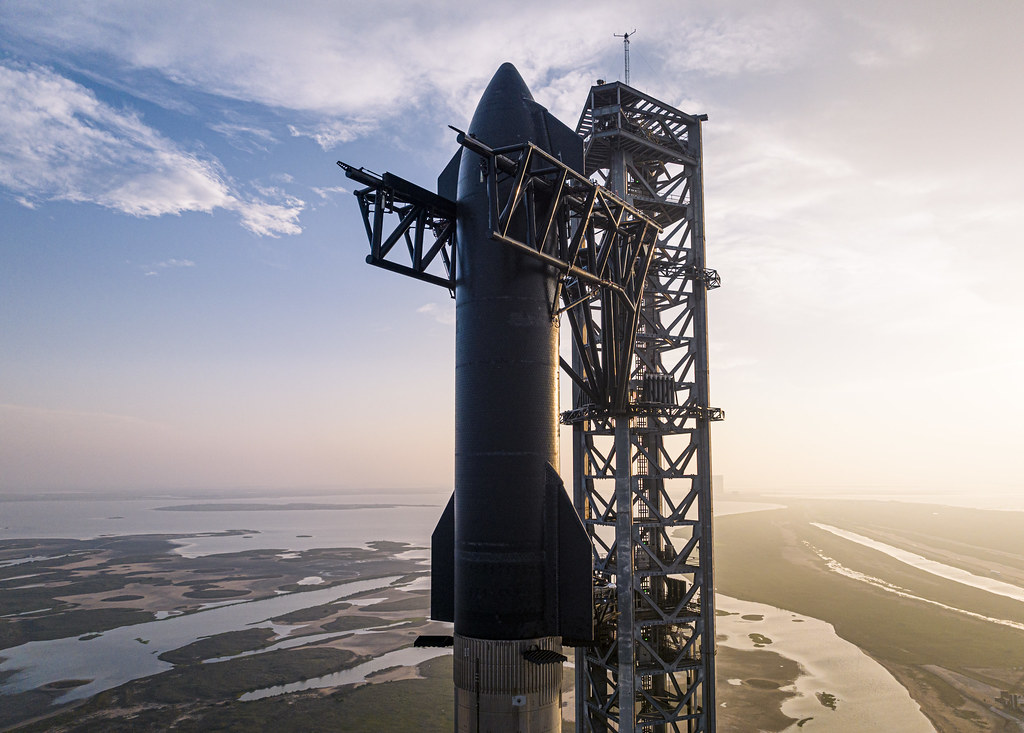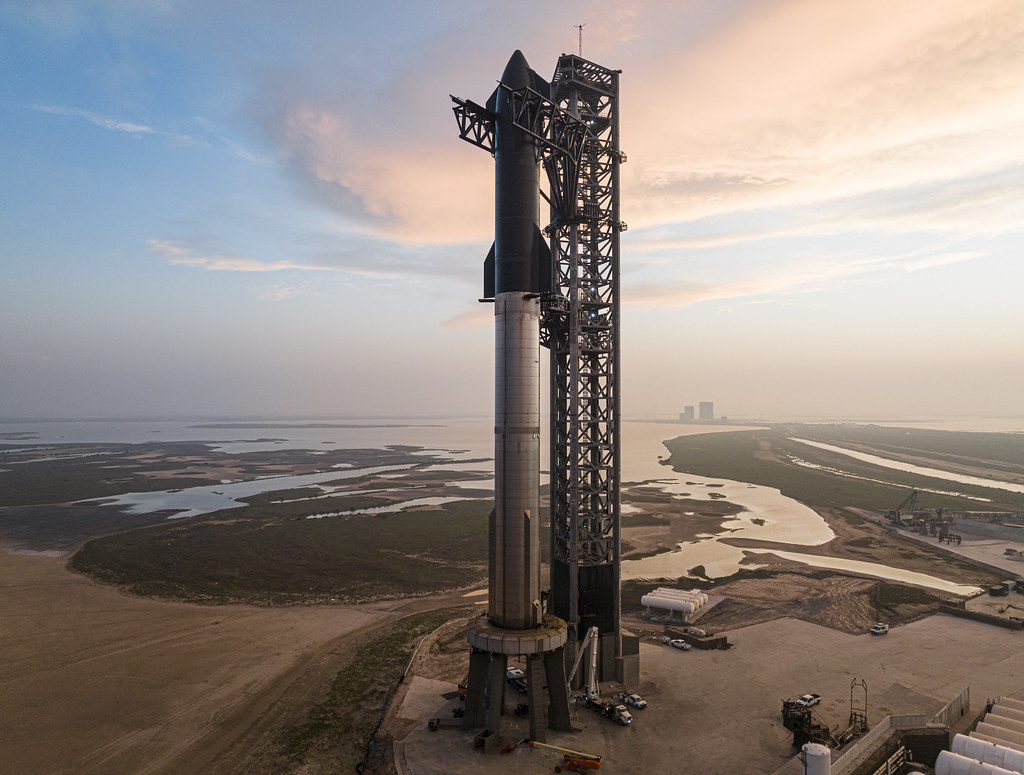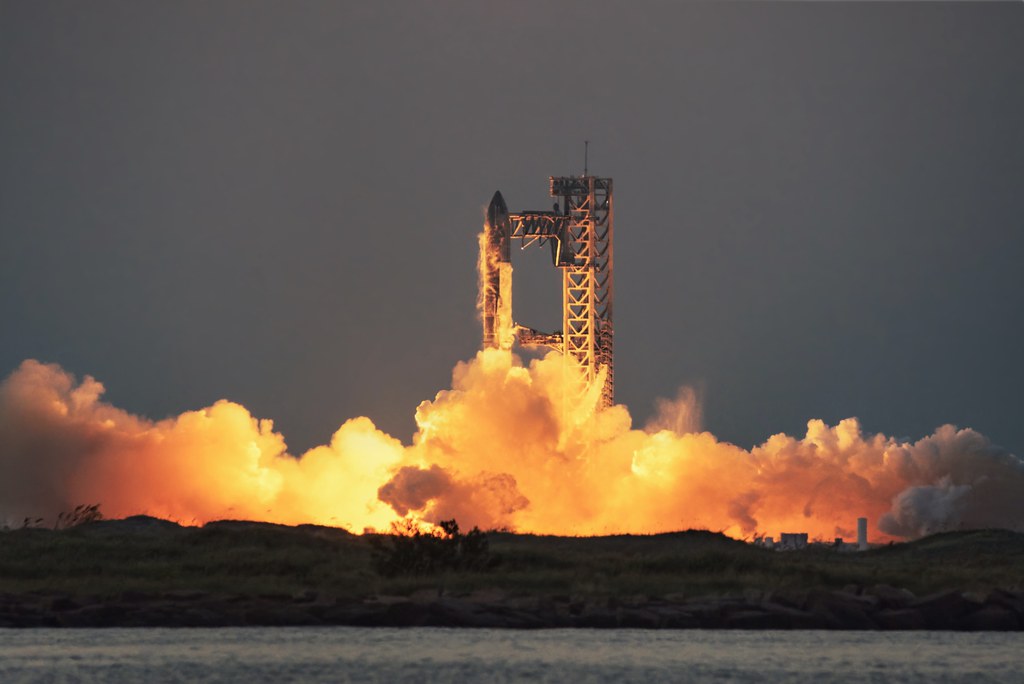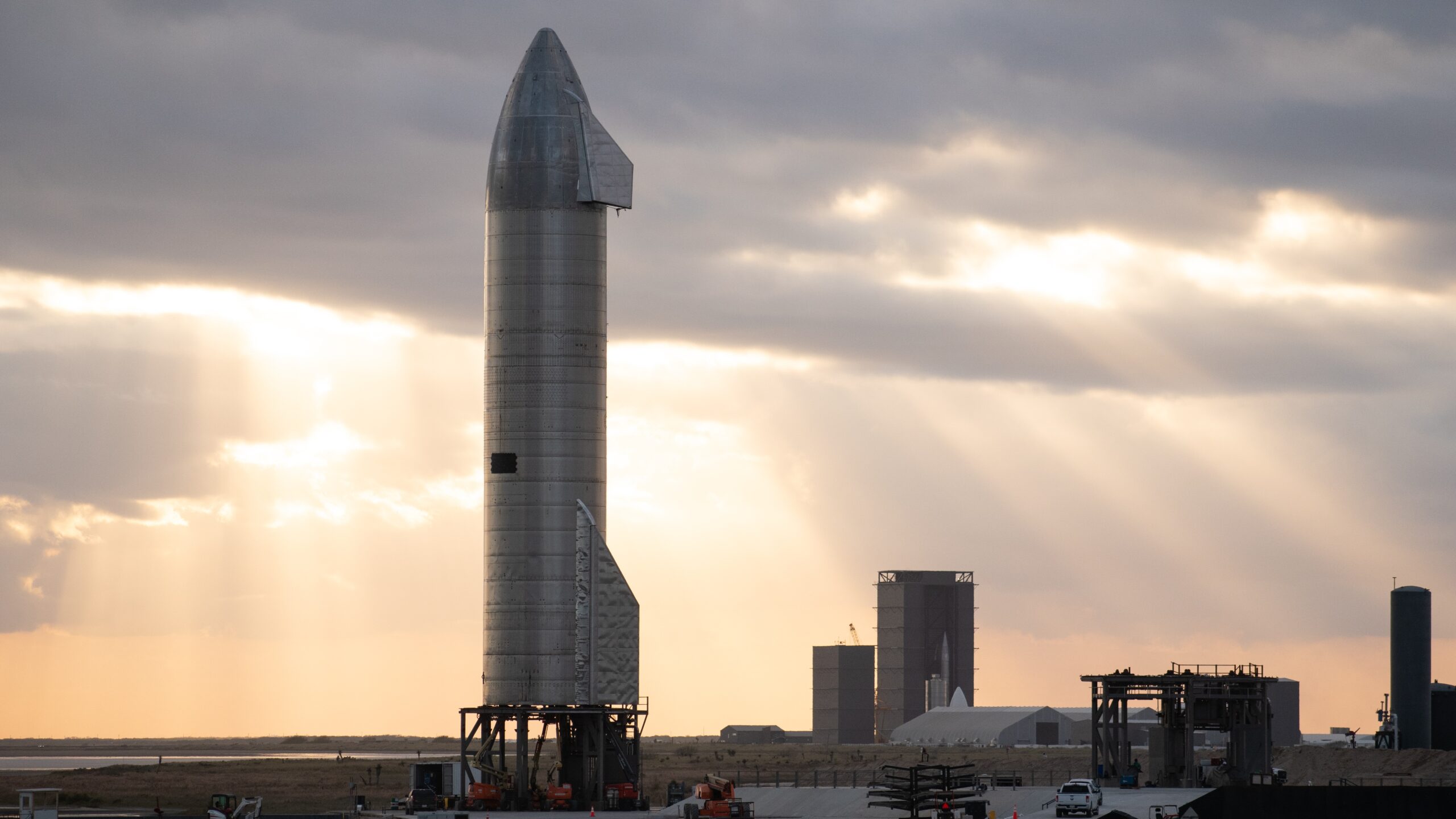After months of preparation and multiple delays, Flight 10 of SpaceX’s Starship program is finally ready for launch. With the entire aerospace community watching closely, this mission could mark a critical turning point in SpaceX’s ambitions for reusable, orbital-class rockets.
From cutting-edge engine tests to heat shield experiments and even simulated satellite deployments, this flight is all about testing, learning, and refining. Here’s everything you need to know about Starship Flight 10, why it matters, and how it could redefine the future of space exploration.
What is Flight 10 and Why Is It Important?
The Next Big Leap for SpaceX
SpaceX has now completed all hardware testing for this mission, meaning the spotlight has officially shifted to the skies. Flight 10 is the next step in validating the Starship system as a fully reusable spacecraft — a crucial component of SpaceX’s long-term goal: Mars colonization.
Unlike previous flights that focused on individual system testing, Flight 10 combines multiple high-risk tests into a single mission, making it the most ambitious Starship flight yet.

When Is Flight 10 Launching?
Mark Your Calendars: August 24th at 6:30 PM
According to official statements and navigation center confirmations, Starship Flight 10 is scheduled to launch on Sunday, August 24th at 6:30 p.m. (CST). This time was selected for optimal daylight visibility, allowing real-time tracking of both the booster and the ship during descent.
Launch Site: Starbase, Boca Chica, Texas
Landing Zones: Gulf of Mexico (booster) & Pacific Ocean (ship)
Flight Overview: What Will Actually Happen?
Let’s break down the mission phase-by-phase for both the Super Heavy Booster and the Starship upper stage, starting from liftoff to landing.
Phase 1: Liftoff and Stage Separation
A Familiar Start with a Few Twists
At T-0, the Super Heavy Booster (Booster 10) will ignite its 33 Raptor engines, lifting the world’s most powerful rocket off the pad. The vehicle will ascend through Max Q — the point of maximum aerodynamic pressure — before reaching stage separation altitude.
This will initiate a hot-staging maneuver, where the upper Starship stage ignites while still attached, forcing the booster away using the engine’s thrust. Hot-staging, first proven successful in Flight 9, is vital for increasing payload capacity and orbital efficiency.
Phase 2: Super Heavy Booster Experiments
Multiple Landing Burn Tests – No Catch Yet
Although there won’t be a catch attempt in this mission, the Super Heavy booster has several critical objectives:
- Boostback Burn using 13 engines
- Active Flip Maneuver post-staging
- Experimental Two-Engine Landing Burn

The Two-Engine Burn Challenge
In one of the boldest tests to date, one of the three center engines will be disabled on purpose, forcing the booster to rely on two engines, one from the inner ring. If successful, this will show that Super Heavy can hover with two engines, increasing survivability in off-nominal scenarios.
Planned Result: Ocean splashdown after engine cutoff — no tower catch this time.
Phase 3: Starship Upper Stage Testing
A Trial by Fire — Literally
Once separated, the Starship upper stage enters its own set of experiments, including:
- Engine relight in space
- New heat shield configurations
- Structural flap tests
- Simulated Starlink payload deployment
Let’s dive deeper into these.
Upper Stage Objectives Explained
Engine Relight Test in Orbit
A major milestone in orbital capability is the ability to restart engines in space. SpaceX will attempt to relight a sea-level Raptor engine mid-orbit — a skill necessary for future lunar missions, Mars returns, and orbital adjustments.
A similar test was first attempted during Flight 6 and is now being refined further.
Revolutionary Heat Shield Changes
SpaceX is deliberately removing some thermal tiles from vulnerable areas of the ship to stress test reentry resilience. At the same time, they are introducing metallic tiles and an active cooling system, marking the first use of such technology on Starship.
Key Heat Shield Tests:
- Tile gap tapering to reduce hotspots
- Catching simulation points outfitted with thermal and structural sensors
- Aft flap structural testing under max dynamic pressure
All of these systems must survive the brutal environment of orbital re-entry, where plasma temperatures can exceed 1,600°C (2,912°F).

Phase 4: Payload Deployment — Starlink Simulation
Eight Simulated Starlink Satellites
SpaceX will release eight Starlink satellite mockups at suborbital altitude. While they aren’t functional, these simulations will help SpaceX test deployment mechanisms for future next-gen satellite launches.
Note: These test satellites are designed to burn up safely during reentry, ensuring zero space debris.
Final Descent and Splashdown
After completing its orbital experiments, the Starship upper stage will begin its high-speed reentry:
- Plasma buildup and extreme heating
- Controlled descent using aerodynamic flaps
- Final landing flip
- Planned ocean splashdown in the Pacific
The goal here is not precision landing but data collection to refine systems for future return-to-launch-site attempts.
Why Flight 10 Is Critical for the Starship Program
Beyond the Hype: It’s All About Data
This isn’t just a flashy test flight. Flight 10 is a technical milestone, offering critical data on:
- Engine redundancy
- Thermal shielding
- Structural integrity under pressure
- Orbital maneuvering capabilities
- Payload deployment systems
According to SpaceX, these lessons will directly inform the next generation of Starship and Super Heavy builds, especially the Version 3 (V3) models currently in development.
Looking Ahead: What Comes After Flight 10?
Flight 11: Tower Catch Possibility?
If Flight 10 meets most or all of its objectives, Flight 11 could become the first-ever tower catch attempt — a daring maneuver where the launch tower arms catch the returning booster mid-air.
However, Elon Musk has referred to this as a “maybe,” indicating that success in Flight 10 is a prerequisite.
If Flight 10 fails, the tower catch attempt may be pushed to early 2026, delaying full reusability.
Starship’s Road to the Moon and Mars
With deadlines looming for NASA’s Artemis program and SpaceX’s own Mars colonization goals, the timeline pressure is real. Flight 10 serves as a critical gatekeeper to 2026 and beyond.
Launch Preparations: T-60 Minutes to Liftoff
One hour before liftoff, here’s what happens:
- LOX and methane fueling begins
- Engines are chilled to prevent cracks
- Water deluge system floods the pad
- Final systems check
- 33 Raptor engines ignite
- Starship lifts off, beginning another chapter in space history
Conclusion: A Turning Point in SpaceX’s Journey
Flight 10 is not just another launch; it’s a high-stakes, high-reward experiment. Every component — from the engine relight to the heat shield tests, from the booster’s landing burns to the flap resilience trials — pushes Starship closer to becoming the world’s first fully reusable, interplanetary rocket.
Whether success or setback, the data gathered from this mission will shape the future of space travel, influencing everything from orbital refueling to Mars base planning.
August 24th could be a historic day — one that brings us closer to the stars or reminds us of the challenges we still face. Either way, SpaceX is charging ahead, and the world is watching.
FAQs
1. What is Starship Flight 10?
Starship Flight 10 is the next major test flight in SpaceX’s fully reusable rocket program, designed to push the boundaries of booster recovery, orbital testing, engine relight, heat shield resilience, and simulated satellite deployments.
2. When is Starship Flight 10 scheduled to launch?
The launch is scheduled for Sunday, August 24th, at 6:30 PM (Central Time), from Starbase in Boca Chica, Texas.
3. Will Starship Flight 10 attempt a tower catch?
No, there will be no tower catch attempt during Flight 10. The Super Heavy booster will splash down in the Gulf of Mexico after conducting experimental landing burns.
4. What is the main goal of Flight 10?
The mission’s main goal is to collect critical flight data, test engine configurations, validate heat shield designs, and simulate orbital procedures needed for future Moon and Mars missions.
5. Will Starship reach orbit during Flight 10?
Flight 10 will simulate an orbital trajectory, but the vehicle will not complete a full orbit. It will re-enter the atmosphere and splash down in the ocean.
6. What’s new in this flight compared to previous ones?
Flight 10 introduces several firsts, including:
- A two-engine landing burn
- Engine relight in space
- Metallic heat shield tiles
- Active cooling system testing
- Simulation of catching hardware under reentry conditions
7. Will the booster return to the launch site?
No, the Super Heavy booster will perform a boostback burn and experimental landing maneuvers before splashing down offshore in the Gulf of Mexico.
8. What is hot staging and why is it important?
Hot staging is a maneuver where the upper stage ignites before full separation, using thrust to push the booster away. It saves fuel and increases payload capacity, and was first proven during Flight 9.
9. Why is engine relight in space significant?
Relighting an engine in space proves that Starship can perform orbital maneuvers, adjust trajectories, and eventually return from deep space destinations like the Moon or Mars.
10. Are there any satellites being deployed?
Yes, eight simulated Starlink satellites will be deployed. These are not operational and are intended to burn up during reentry for safety, while helping test deployment mechanisms.
11. What is being tested on the heat shield?
SpaceX is testing:
- Deliberately exposed tile gaps
- New metallic tile materials
- Active cooling systems
- Structural fittings simulating catch points
- Smoother tile edges to prevent hotspots
12. Why is the landing burn using two engines important?
By using only two engines, SpaceX is testing engine redundancy and control. It helps prepare for real-world landing scenarios, especially when one engine may fail.
13. Will Flight 10 carry humans or cargo?
No, Flight 10 is an uncrewed test flight. It’s designed for technical experimentation and data collection, not operational payload delivery.
14. What happens if Flight 10 fails?
Even if it fails, the data collected will be invaluable. However, a failure could delay future milestones like the first tower catch or V3 hardware tests, possibly into early 2026.
15. What role do the flaps play during reentry?
The aft flaps guide the ship during atmospheric descent, maintaining stability and orientation. Flight 10 will test their structural durability under extreme dynamic pressure.
16. What is SpaceX’s goal with Starship?
SpaceX aims to create a rapidly reusable, fully orbital launch system capable of supporting lunar missions, Mars colonization, and satellite deployments, reducing spaceflight costs dramatically.
17. What are the risks involved in this flight?
Risks include:
- Engine failure
- Heat shield breach
- Flap damage
- Deployment malfunctions
All of these are being tested under controlled conditions to improve future reliability.
18. How can I watch the Starship Flight 10 launch?
You can watch the launch live on SpaceX’s official YouTube channel or follow real-time updates on @SpaceX and @ElonMusk’s Twitter/X accounts.
Read More:
- Tesla Model Y L gets disappointingly far production date in the United States
- Tesla Model Y L attracts crowds across China stores
- Tesla’s Elon Musk shares optimistic teaser about FSD V14: “Feels sentient”
- Tesla Model Y L might not come to the U.S., and it’s a missed opportunity
- Tesla offers new deal on used inventory that you won’t want to pass up


1 thought on “SpaceX’s Wild New Starship Flight 10 Timeline Revealed. The Countdown Begins”